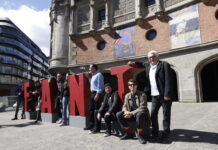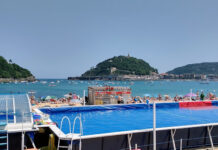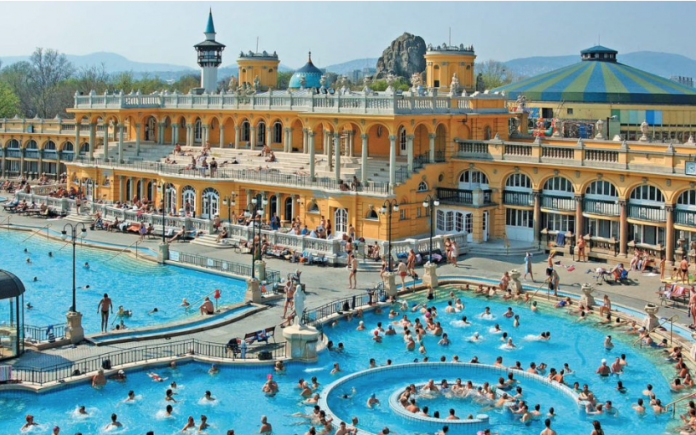Budapest, the capital of Hungary, is known for its thermal baths, which are a popular attraction for tourists from all over the world. Among the many thermal baths in Budapest, the two most famous ones are the Thermal Bath Budapest and the Szechenyi Baths Budapest. In this article, we will take a closer look at these two thermal baths, their history, facilities, and what makes them unique.
Thermal Bath Budapest:
The Thermal Bath Budapest, also known as the Gellért Thermal Bath, is one of the most famous thermal baths in Budapest. It is located in the Gellért Hill neighborhood and is known for its Art Nouveau architecture, which was designed by Hungarian architect Ármin Hegedűs in the early 1900s.
History:
The history of the Thermal Bath Budapest can be traced back to the 15th century, when the Turks ruled Hungary. The Turks were known for their love of thermal baths and they built many of them in Hungary. However, the current building of the Thermal Bath Budapest was built during the early 20th century. It was designed to be a luxurious bathhouse that would attract the wealthy elite of Budapest.
Facilities:
The Thermal Bath Budapest has many facilities that are available to its visitors. The bathhouse has 13 thermal baths, including an outdoor pool, an indoor swimming pool, and a steam room. It also has a sauna, a gym, and a massage center.
What makes it unique:
The Thermal Bath Budapest is known for its Art Nouveau architecture, which is a popular style of art that was popular in the early 20th century. The bathhouse is also known for its thermal water, which is rich in minerals and is said to have many health benefits. The water is sourced from a natural spring located underneath the bathhouse.
Szechenyi Baths Budapest:
The Szechenyi Baths Budapest is another popular thermal bath in Budapest. It is located in the City Park neighborhood and is known for its neoclassical architecture.
History:
The Szechenyi Baths Budapest was built in the early 20th century and was named after Hungarian politician and writer István Széchenyi. The bathhouse was built to be a luxurious bathhouse that would attract the wealthy elite of Budapest.
Facilities:
The Szechenyi Baths Budapest has many facilities that are available to its visitors. The bathhouse has 18 thermal baths, including outdoor and indoor pools, saunas, steam rooms, and a massage center. It also has a gym and a restaurant.
What makes it unique:
The Szechenyi Baths Budapest is known for its neoclassical architecture, which is a popular style of art that was popular in the late 18th and early 19th centuries. The bathhouse is also known for its thermal water, which is sourced from two natural springs located underneath the bathhouse.
Comparison:
While both the Thermal Bath Budapest and the Szechenyi Baths Budapest are popular thermal baths in Budapest, there are some differences between the two.
Architecture:
The Thermal Bath Budapest is known for its Art Nouveau architecture, while the Szechenyi Baths Budapest is known for its neoclassical architecture.
Number of thermal baths:
The Thermal Bath Budapest has 13 thermal baths, while the Szechenyi Baths Budapest has 18 thermal baths.
Location:
The Thermal Bath Budapest is located in the Gellért Hill neighborhood, while the Szechenyi Baths Budapest is located in the City Park neighborhood.
Conclusion:
Budapest is known for its thermal baths, and the Thermal Bath Budapest and the Szechenyi Baths Budapest are two of the most famous ones. While both the thermal baths offer similar facilities, they have their unique features that make them stand out. The Thermal
Bath Budapest is known for its Art Nouveau architecture and 13 thermal baths, while the Szechenyi Baths Budapest is known for its neoclassical architecture and 18 thermal baths. Both bathhouses have their unique features that attract visitors from all over the world.
When it comes to choosing between the two thermal baths, it ultimately depends on personal preference. If you are a fan of Art Nouveau architecture, then the Thermal Bath Budapest might be the one for you. On the other hand, if you prefer neoclassical architecture, then the Szechenyi Baths Budapest might be more your style.
Another factor to consider is location. The Thermal Bath Budapest is located in the Gellért Hill neighborhood, which is closer to the city center and has more tourist attractions nearby. The Szechenyi Baths Budapest, on the other hand, is located in the City Park neighborhood, which is further away from the city center but has more green spaces and a quieter atmosphere.
Both thermal baths offer a range of facilities, including thermal baths, saunas, steam rooms, and massage centers. They also offer a variety of services such as private cabins, VIP services, and medical treatments. The thermal water at both baths is known for its healing properties and is said to help with various health conditions such as arthritis and respiratory problems.
In conclusion, the Thermal Bath Budapest and the Szechenyi Baths Budapest are two of the most famous thermal baths in Budapest, each with its unique features and facilities. Whether you prefer Art Nouveau or neoclassical architecture, or if you want to be closer to the city center or surrounded by greenery, both thermal baths offer a relaxing and rejuvenating experience that is worth a visit.





























